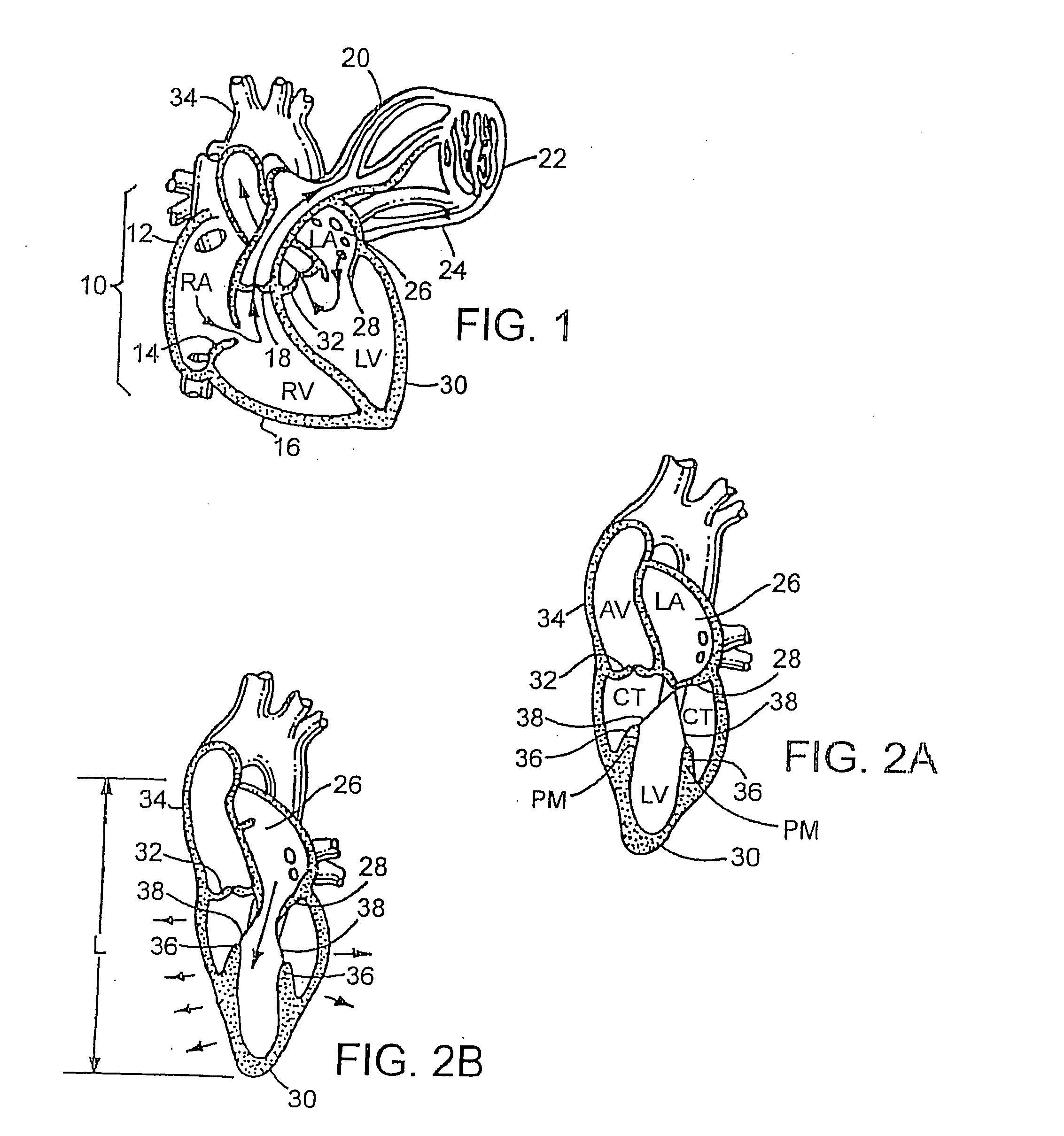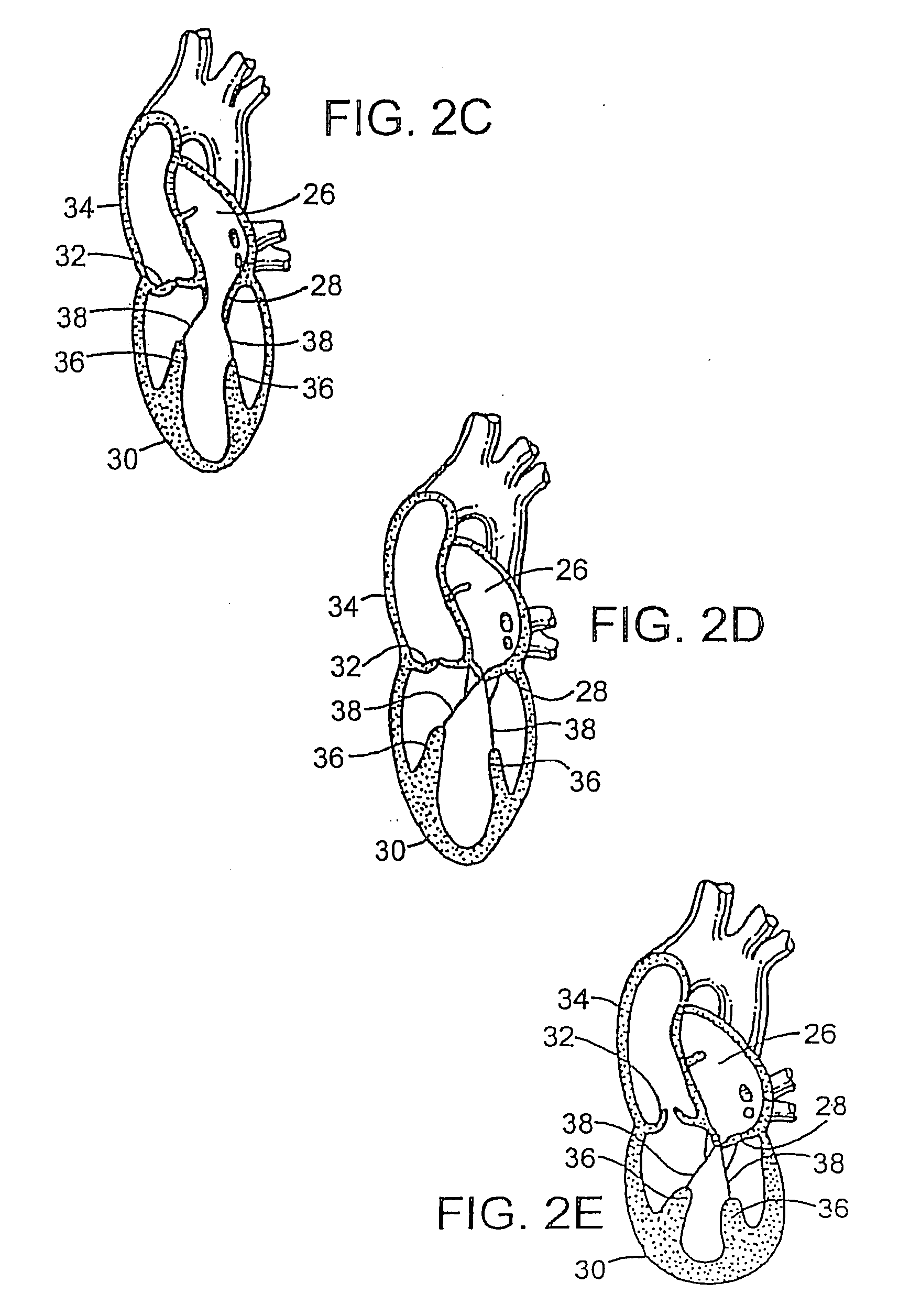Device to permit offpump beating heart coronary bypass surgery
a heart valve and bypass surgery technology, applied in the field of heart valve retractors, can solve the problems of impaired cardiac performance, irreversible damage to the brain and other tissues and organs of patients, toxic to older and debilitated patients, etc., and achieve the effect of less effect less impact on the performance of the heart, and preserving the ability to contra
- Summary
- Abstract
- Description
- Claims
- Application Information
AI Technical Summary
Benefits of technology
Problems solved by technology
Method used
Image
Examples
Embodiment Construction
[0062] In FIG. 1, the normal circulatory pattern of blood through heart 10 is illustrated. Blood from the venous system enters the first chamber of the heart, the right atrium (R.A.) 12. From right atrium 12, it passes through tricuspid valve 14 into right ventricle (R.V.) 16 via pulmonic valve 18, entering pulmonary artery 20 which leads to lungs 22. In lungs 22, carbon dioxide is released and the blood is reoxygenated. Blood then exits lungs 22 back into pulmonary vein 24 which leads to left atrium (L.A.) 26. From left atrium 26, blood passes through mitral valve 28 into left ventricle (L.V.) 30. Blood then exits heart 10 via aortic valve 32 into aorta 34 and the generalized arterial circulation.
[0063] Cardiac contraction is orchestrated by electrical impulses originating from the heart's nervous system. Electrical stimulation to the myocardial fibers results in muscular contraction. Specifically timed electrical signals originating in the upper chambers of the heart cause the at...
PUM
 Login to View More
Login to View More Abstract
Description
Claims
Application Information
 Login to View More
Login to View More - R&D
- Intellectual Property
- Life Sciences
- Materials
- Tech Scout
- Unparalleled Data Quality
- Higher Quality Content
- 60% Fewer Hallucinations
Browse by: Latest US Patents, China's latest patents, Technical Efficacy Thesaurus, Application Domain, Technology Topic, Popular Technical Reports.
© 2025 PatSnap. All rights reserved.Legal|Privacy policy|Modern Slavery Act Transparency Statement|Sitemap|About US| Contact US: help@patsnap.com



